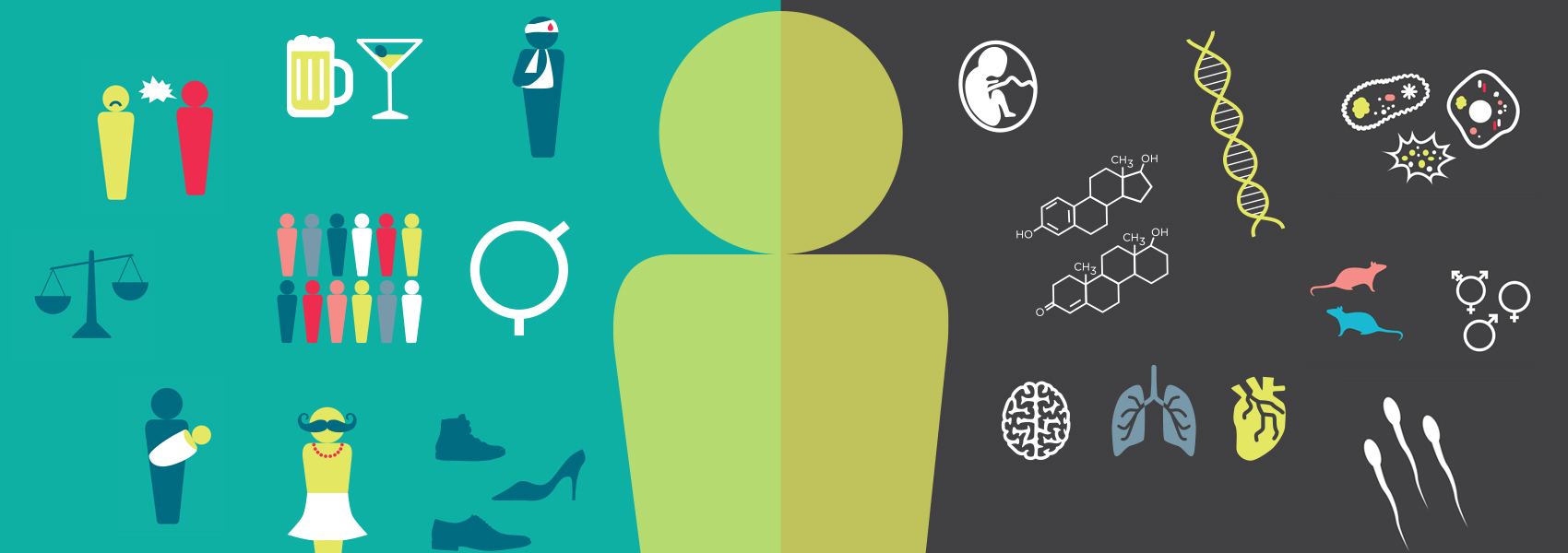Our Clinical Research 101 series takes an in-depth look at key steps and tips for navigating the clinical research process. The thirteenth installment in our Clinical Research 101 series is by Sean Sinden, Communications and Knowledge Translation Officer. The following is, in part, an adaptation of materials from a workshop hosted by the Support Programs to Advance Research Capacity (SPARC) at UBC.
Mr. Sinden’s primary role is in managing the external and internal communications related to CHÉOS and supporting CHÉOS Scientists in their knowledge translation efforts. He works concurrently with the CIHR Canadian HIV Trials Network, working with investigators to describe their research in plain language for non-scientists. If you would like to inquire about our services, please submit your request here.
What is sex and gender?
The consideration of sex and gender when designing and implementing health studies is critical in producing the best possible health research evidence. There is a growing expectation that people use appropriate language when discussing these concepts. Introduced in the Spring 2018 Project Grant competition, CIHR now requires that all applicants integrate sex and gender into their research designs. This does not mean that sex and gender should be mentioned in one or two instances but that thoughtful attention must be given to these areas throughout the application.
Though often used interchangeably, sex and gender are two related but distinct concepts. Sex refers to biological characteristics and attributes in humans and animals and is typically associated with physiological, chromosomal, genetic, hormonal, and anatomical differences between men and women. Gender, on the other hand, refers to cultural attitudes and behaviours and socially constructed roles and identities — gender does not necessarily mirror sex. Gendered behaviours and attitudes are learned and exist along a continuum.
On the one hand, a researcher may explore sex (i.e., physiological) differences between men and women in their response to a certain disease or health issue, such as in the new CODE-MI Study. In this example, CHÉOS Scientist, Dr. Karin Humphries is concerned with sex-related differences in the level of a protein biomarker in blood following a heart attack (high sensitivity cardiac troponin). Compared to males, females produce less of this biomarker after a heart attack and consequently, currently used clinical diagnostic tests may be overlooking some women who have had a heart event. Conversely, measuring gender-related information might be useful in understanding differences in work and health, such as in a 2016 paper by Dr. Mieke Koehoorn. In this publication, the researchers created a tool to measure gender roles, like caring for children, level of education, and type of occupation, that can be used to explore differences in work-related health status.
Why is sex and gender important?
The use of sex- and gender-based analysis is important because, together with consideration of other categories of social identity (e.g., race, geography, and age), it helps to focus research, policies, and programs on outcomes that are relevant across diverse groups of Canadians.
Serious consideration of how sex and gender can also affect the outcomes of a research project can improve the interpretation and understanding of data. For example, consider one of the secondary analyses conducted on the data from the SALOME Trial. Dr. Eugenia Oviedo-Joekes, in collaboration with other CHÉOS Scientists and staff, was able to identify gender-based differences in participants’ perceptions of the positive aspects of injectable opioid treatment for long-term opioid-dependence. Compared to men, women were more explicit about improvement in quality of life (e.g., rebuilding of social life) and cited not having to be involved in sex work as a reason they considered the treatment to be effective. Men, in contrast, identified reduced theft, drug dealing, and concern about incarceration as positive aspects and outcomes of treatment.
When do I need to include sex and gender?
According to CIHR guidelines, sex and gender must be integrated into each section of a research proposal (unless a rationale for not doing so is provided). For the literature review section, existing research in both men and women should be described, research gaps related to sex and gender should be explicitly stated, and, if required, strong justification for a proposed study including only males or females should be provided. The objectives section must clearly state the intention of the research to study an outcome in males and/or females or across and/or within the gender spectrum (i.e., not just participants, controls, etc.). The methods and analysis plan should include a sample size sufficient to address potential sex and/or gender differences and differences in techniques, barriers, and facilitators for recruitment and data collection should be outlined. Applicants should state whether or not study materials, like informed consent forms and questionnaires, capture sex and/or gender identities. Finally, the knowledge translation (KT) plan should state how KT will be specified for participants and relevant groups based on sex and gender and how presentations and publications will address sex and gender.
There are cases when sex and gender considerations may not be expected, such as in sex-specific diseases (e.g., ovarian cancer), pregnancy, an understudied area in one sex (e.g., osteoporosis in men), existing data that includes only one sex, and some secondary analyses. The inclusion and recognition of sex and gender and how these factors impact various research questions is essential. It must be stressed that individuals of one sex do not constitute a homogenous population. A diversity framework which explores other determinants of health should still be considered and applied even when sex and gender differences will not be explored.
Links to references and resources:
- How to Integrate Sex and Gender into Research (CIHR) [webpage]
- Integrating Sex & Gender in Health Research (CIHR) [training modules]
- Sex, Gender & Health Research in Canada (CIHR) [infographic]
- SPARC Sex and Gender Considerations (requires CWL) [webpage]
- Tools for visualizing sex differences (SexDifferences.org) [webpage]
The CHÉOS communications team is available to help answer questions about including sex and gender in your research. For more information, please contact communications@cheos.ubc.ca.



